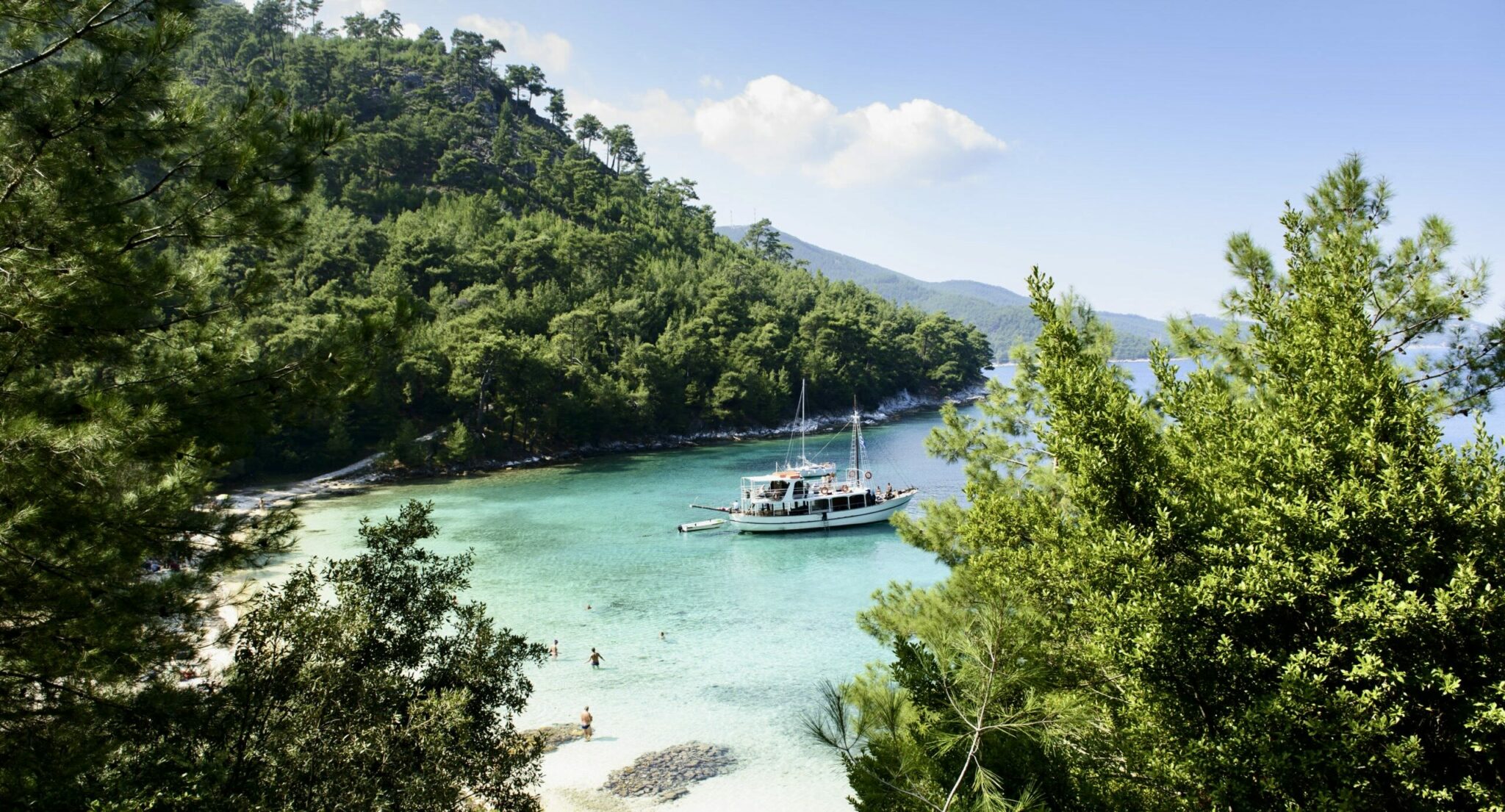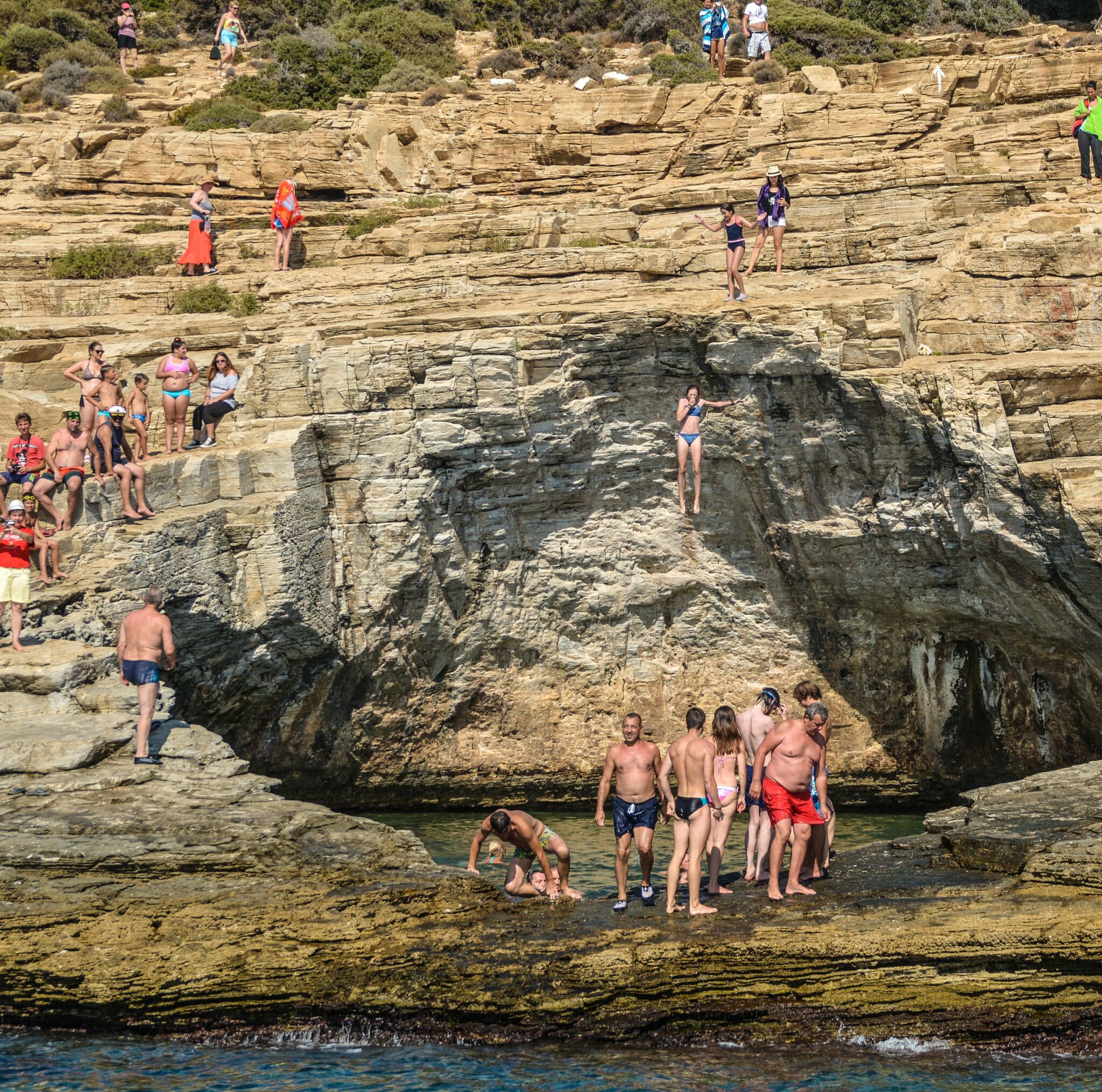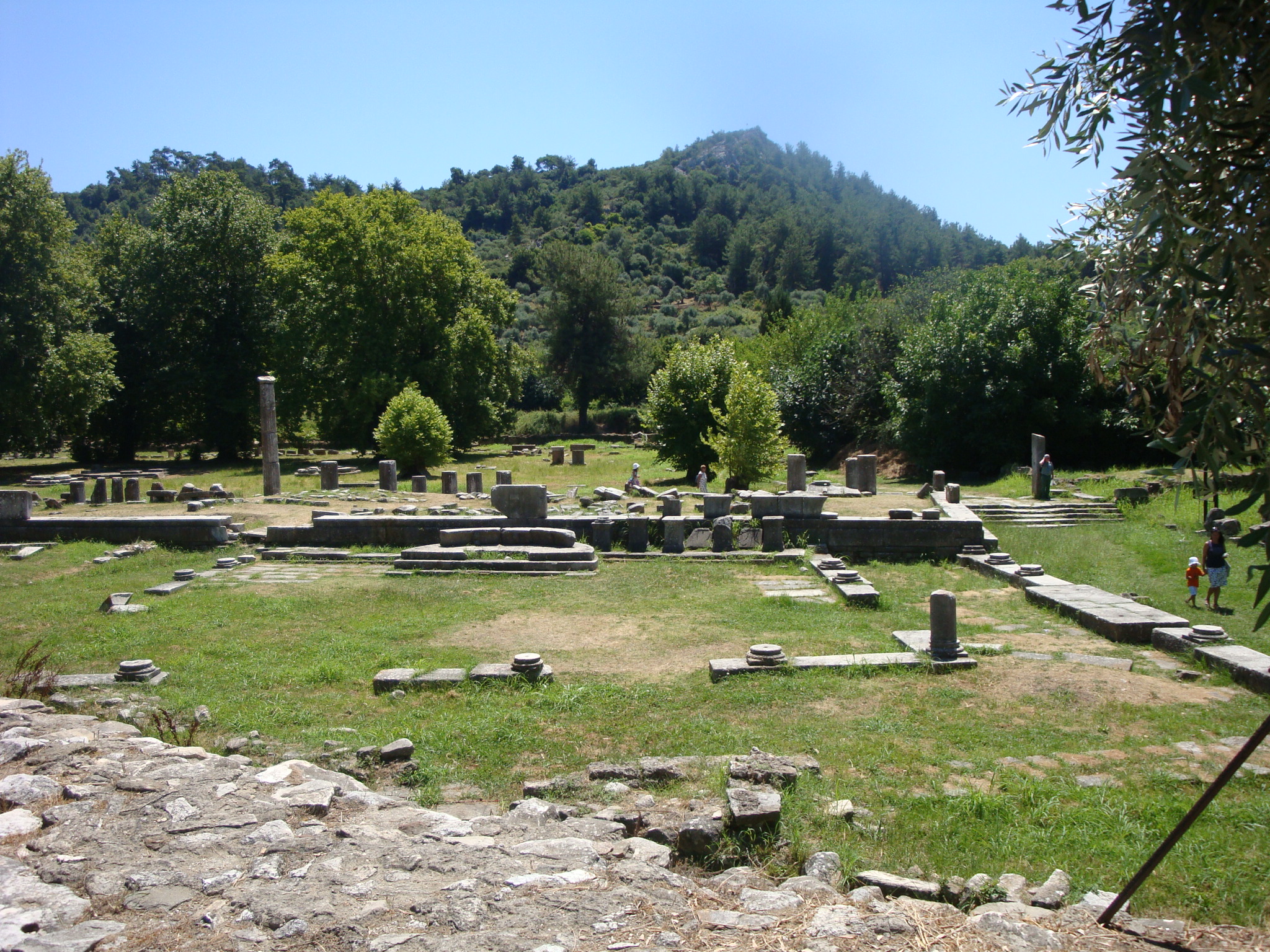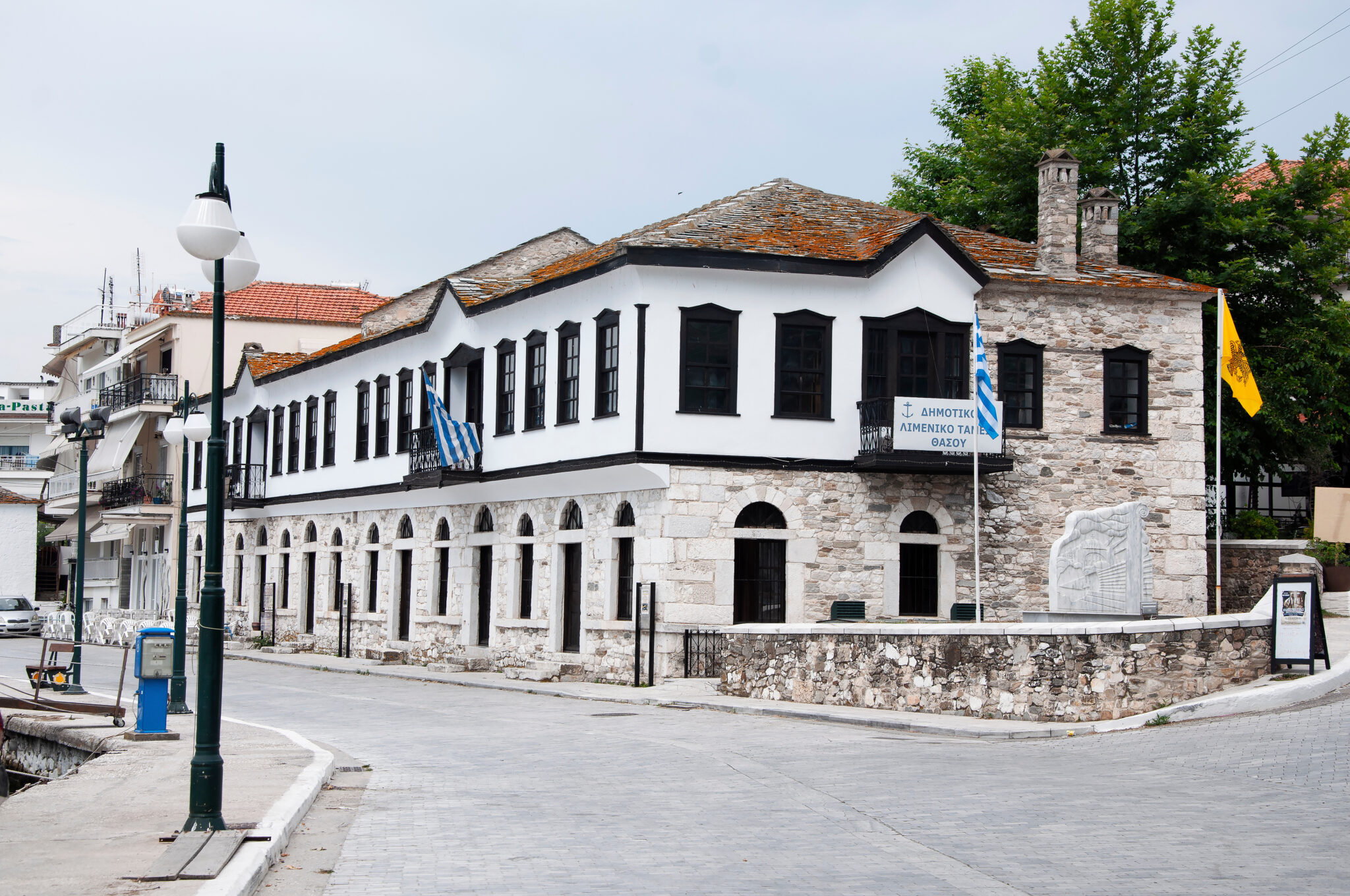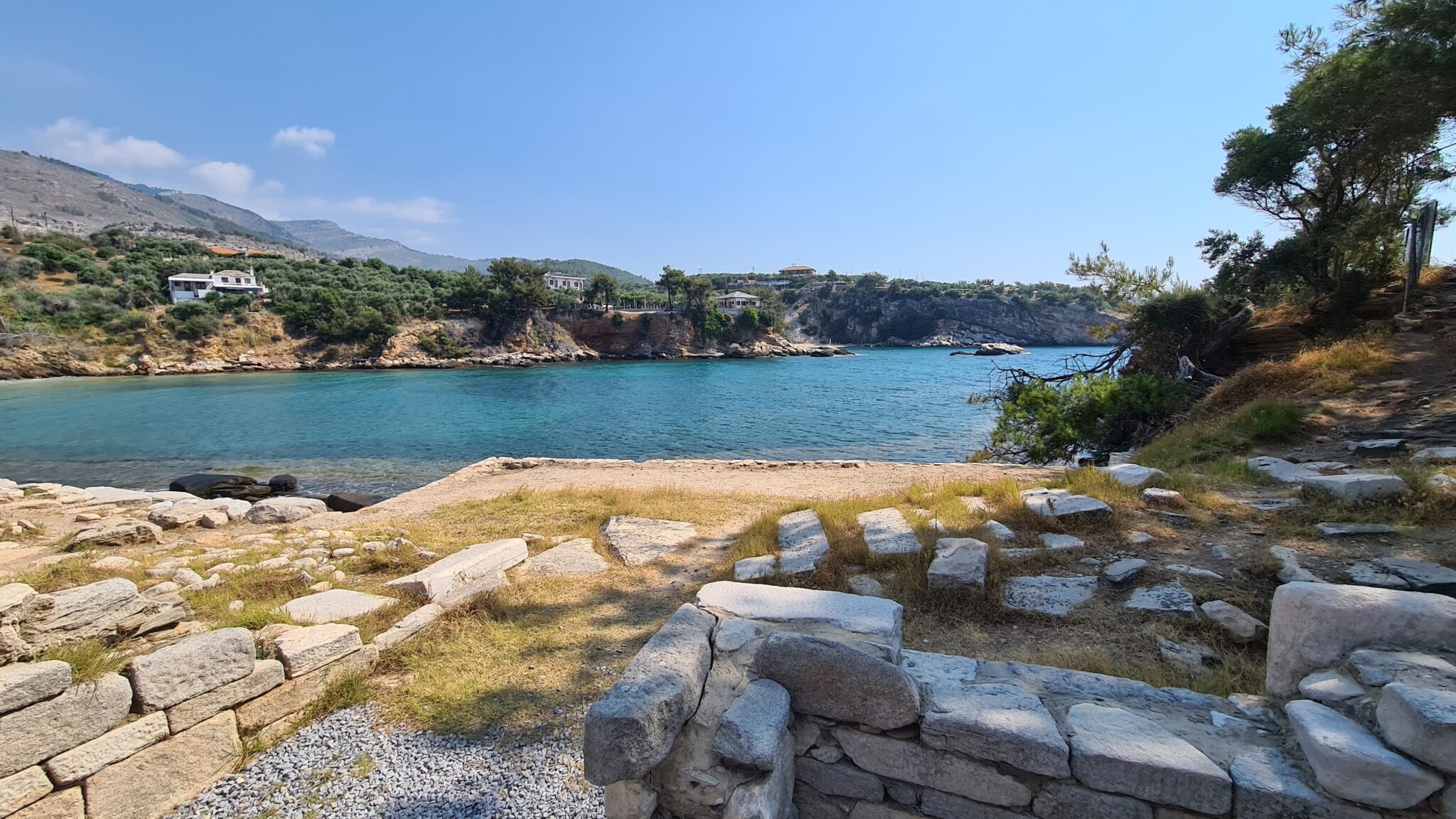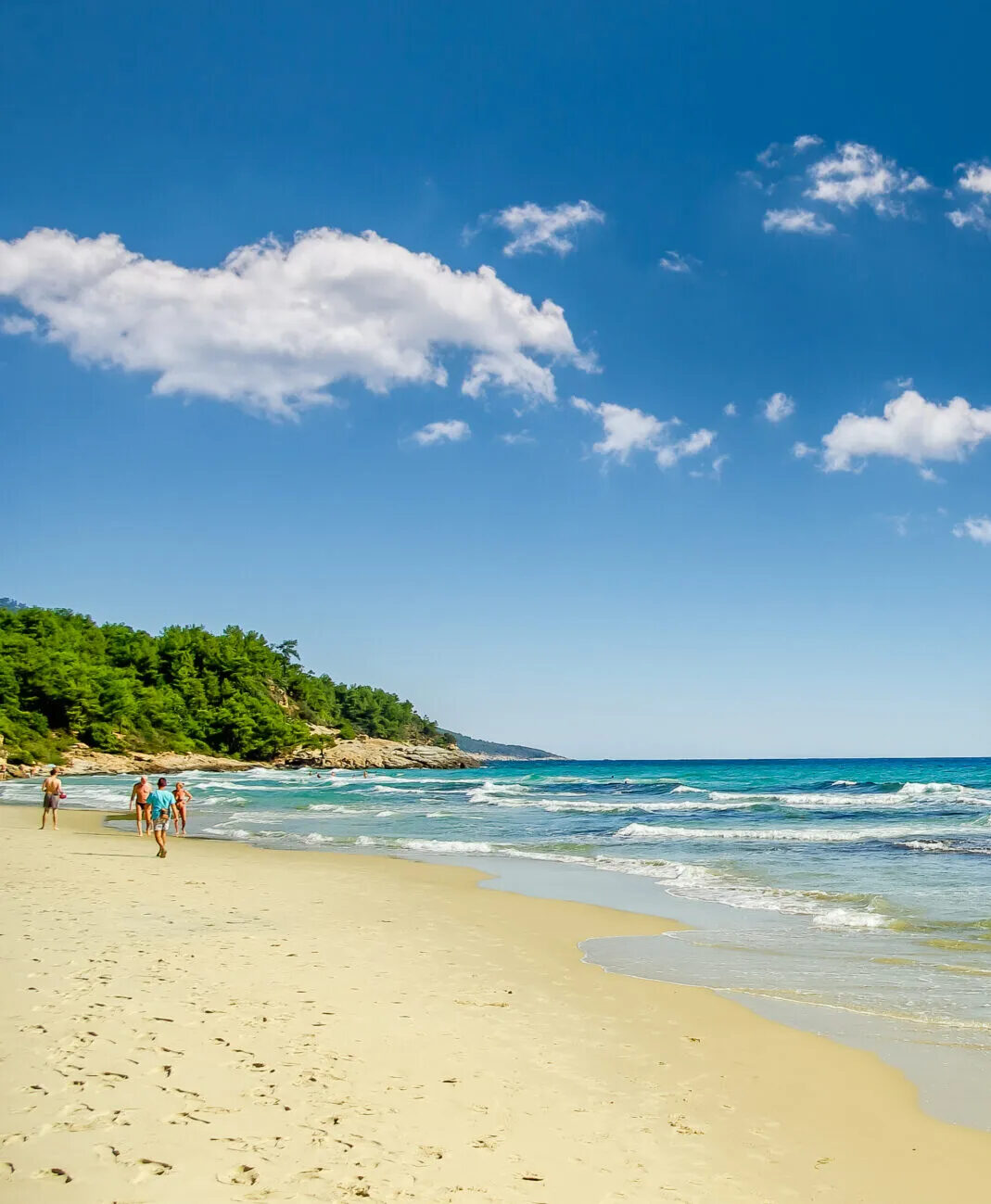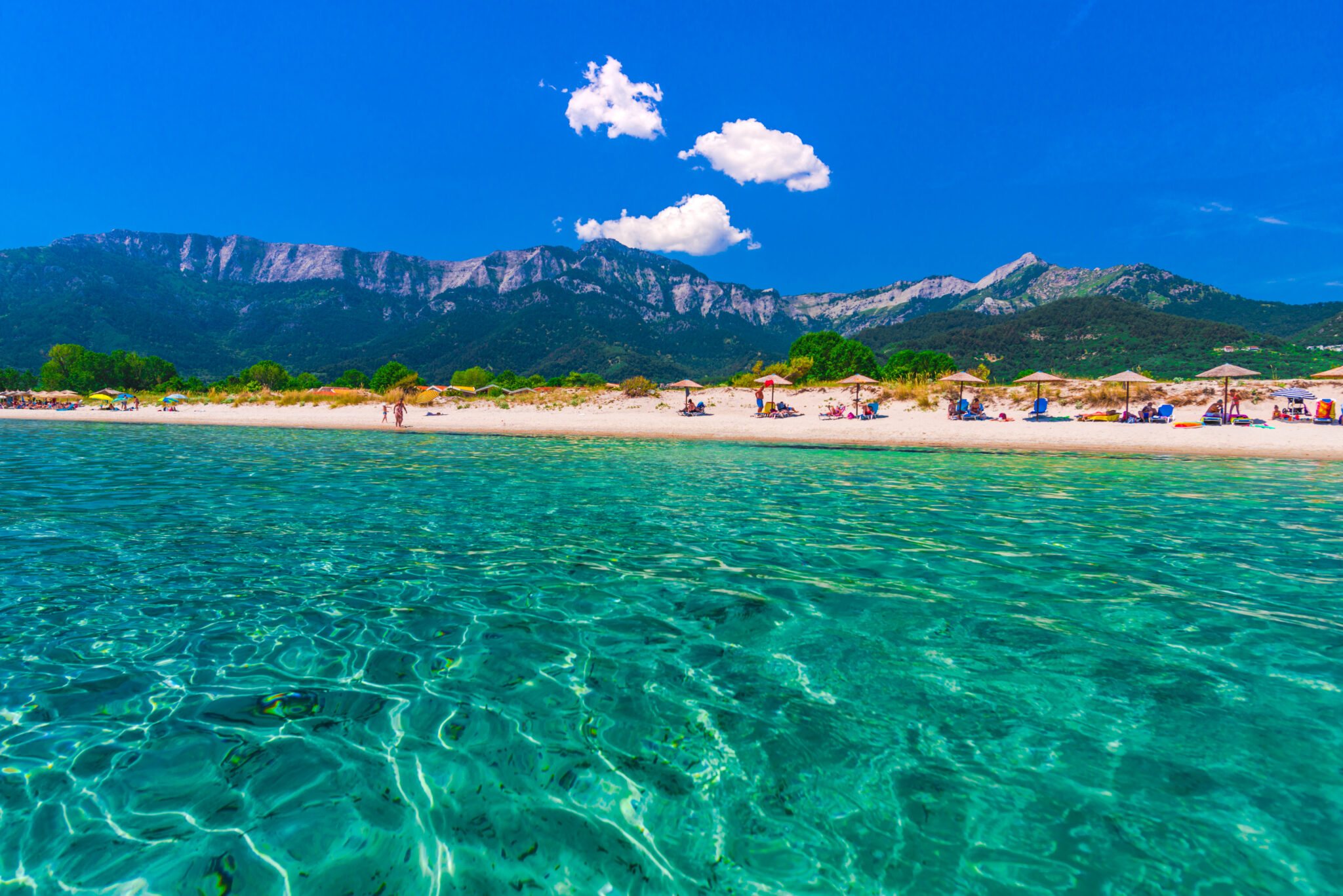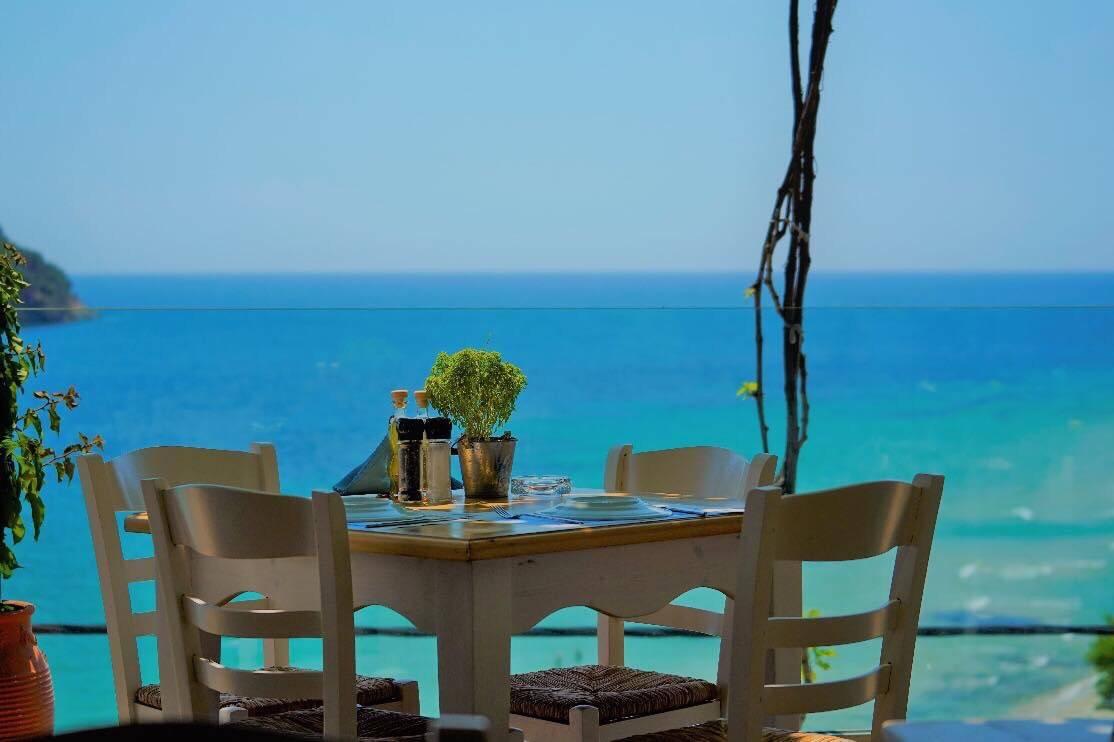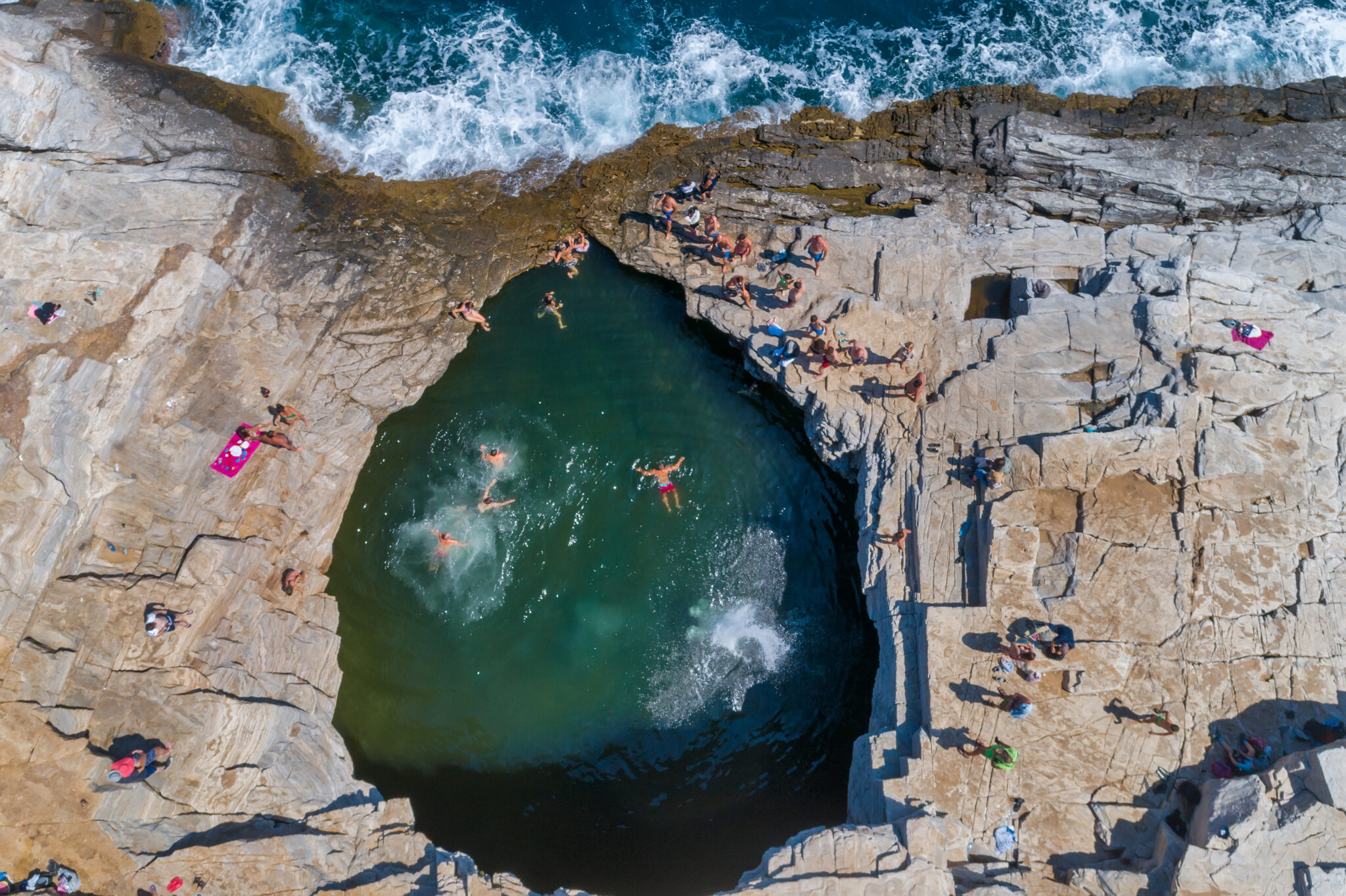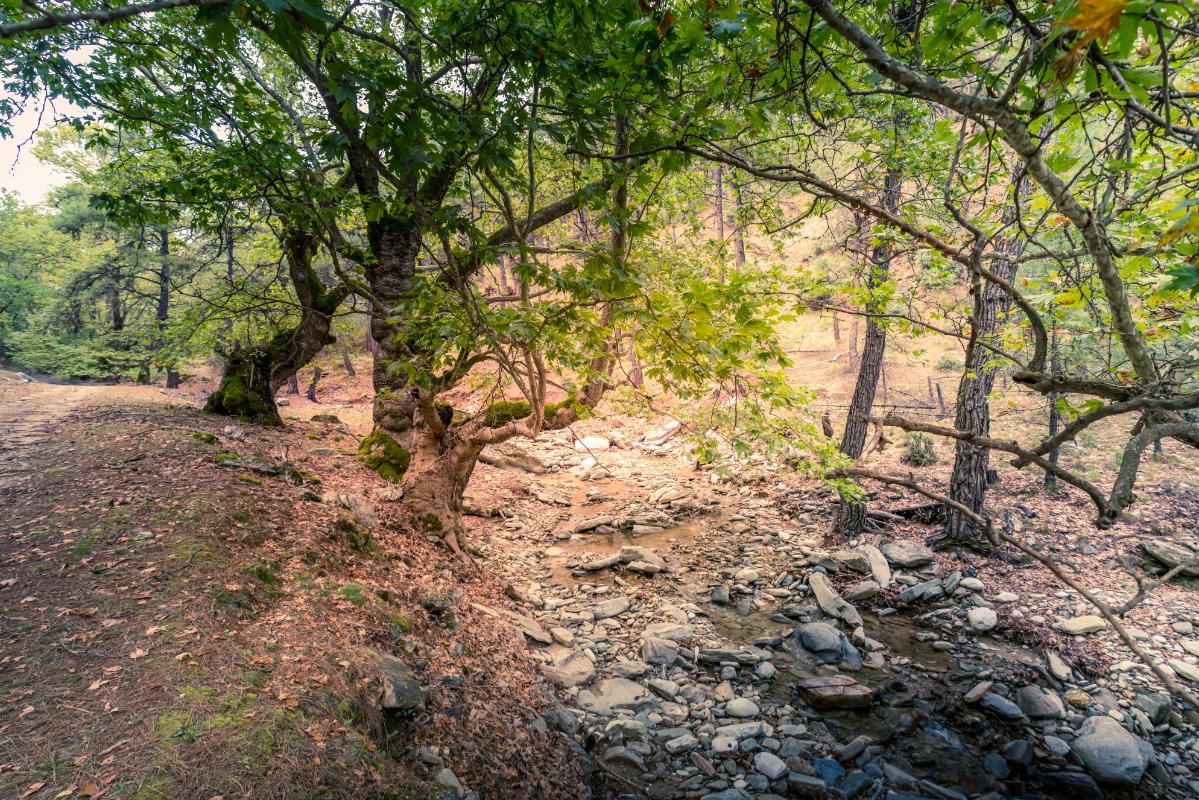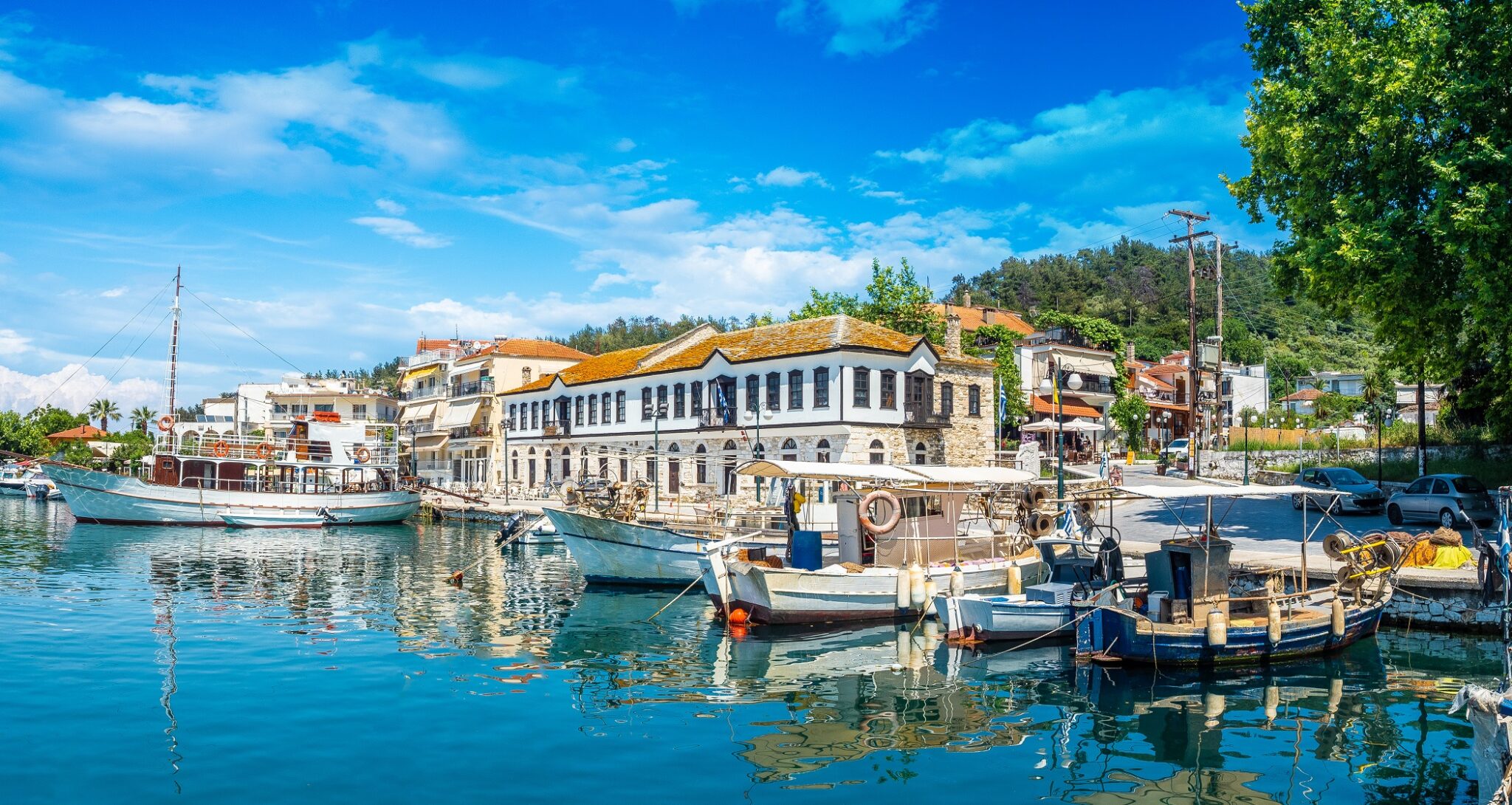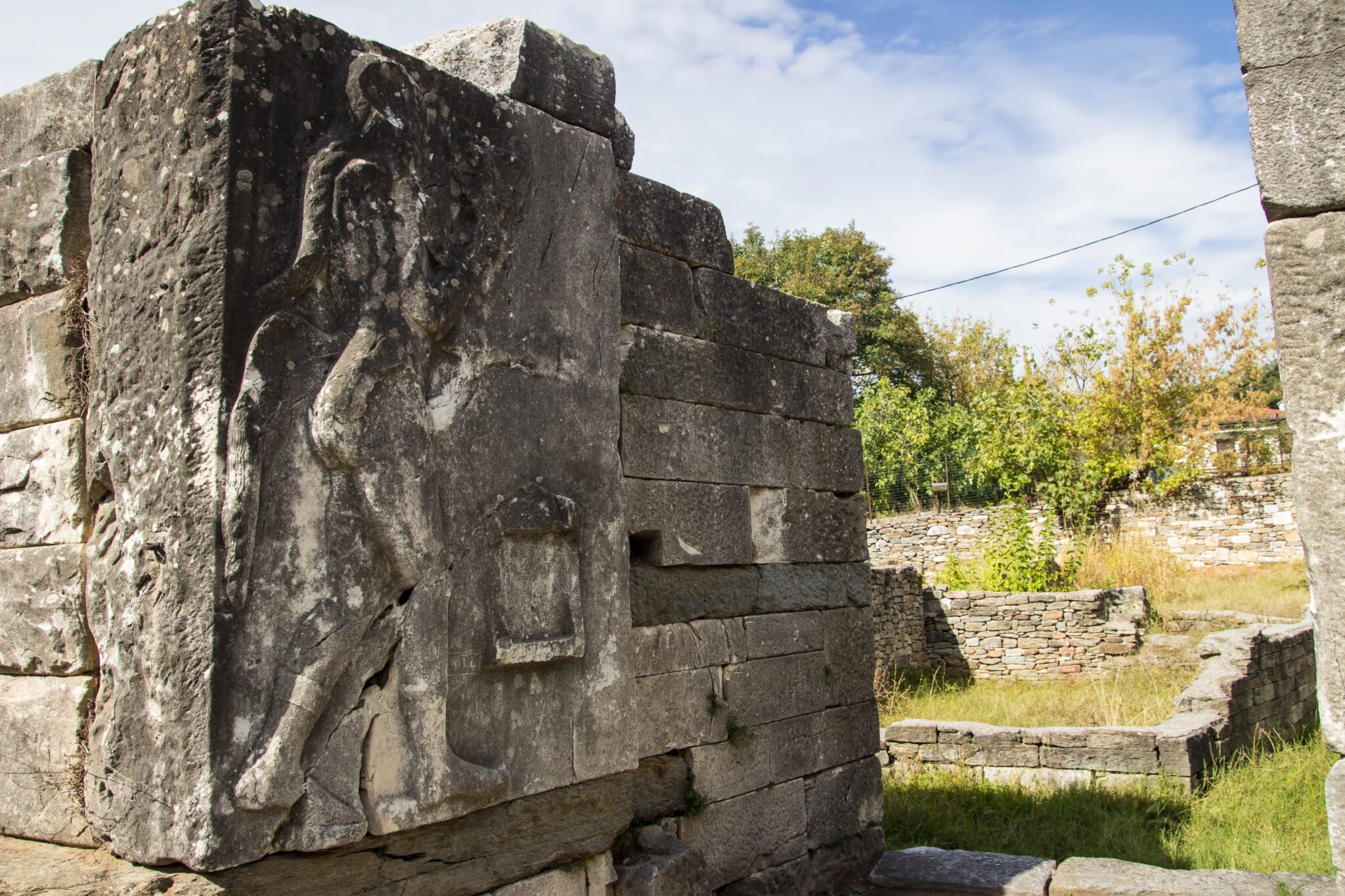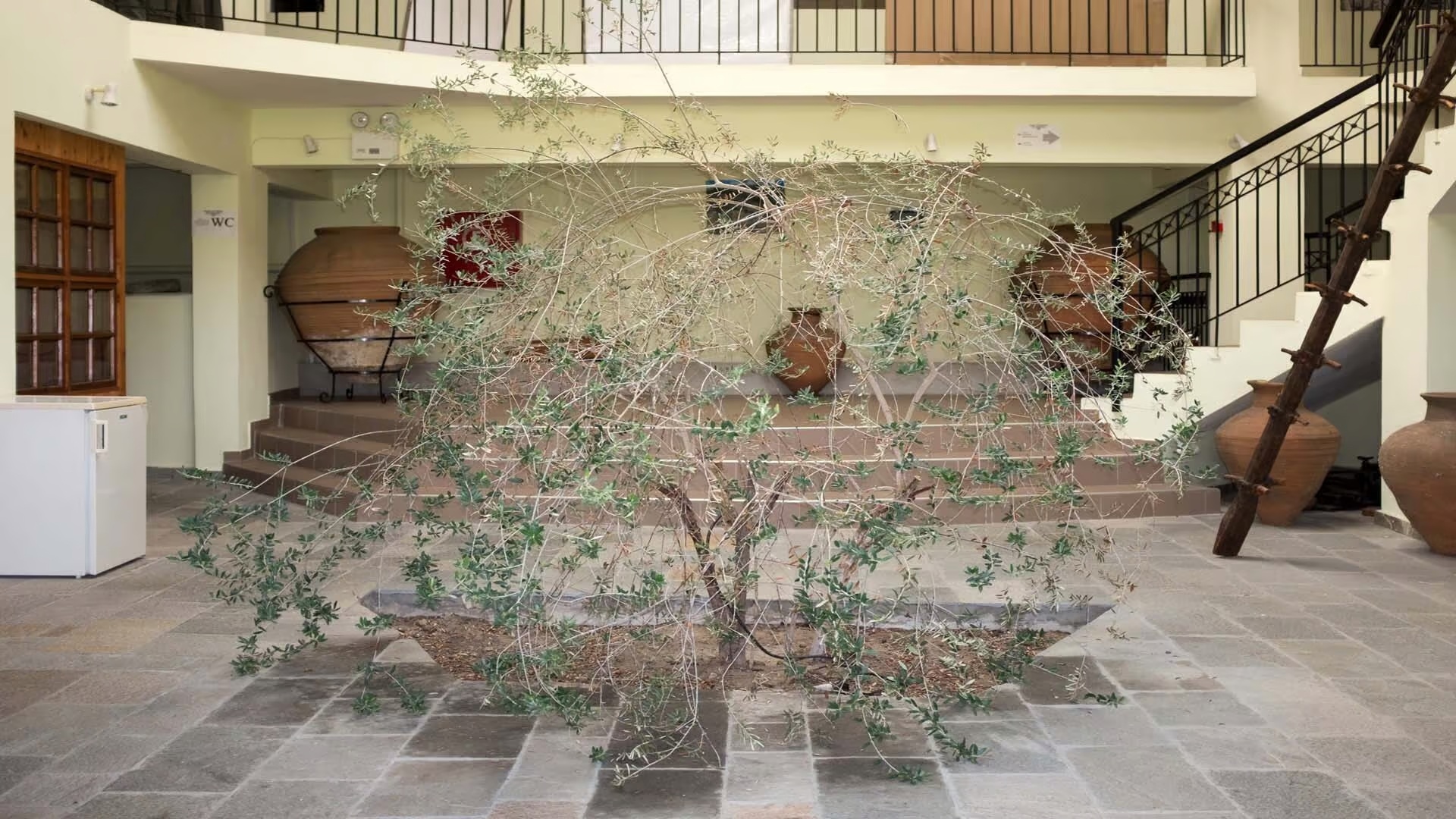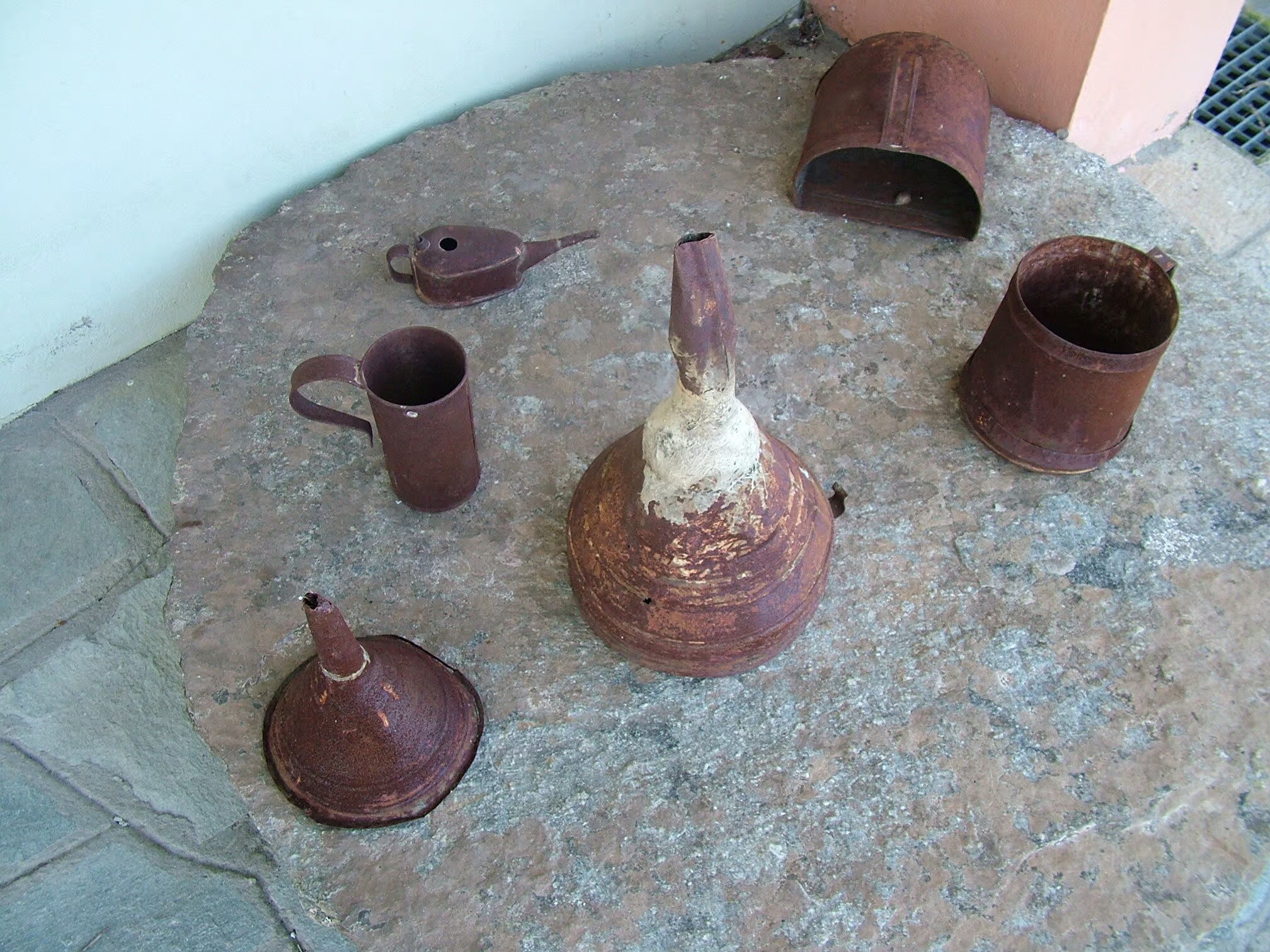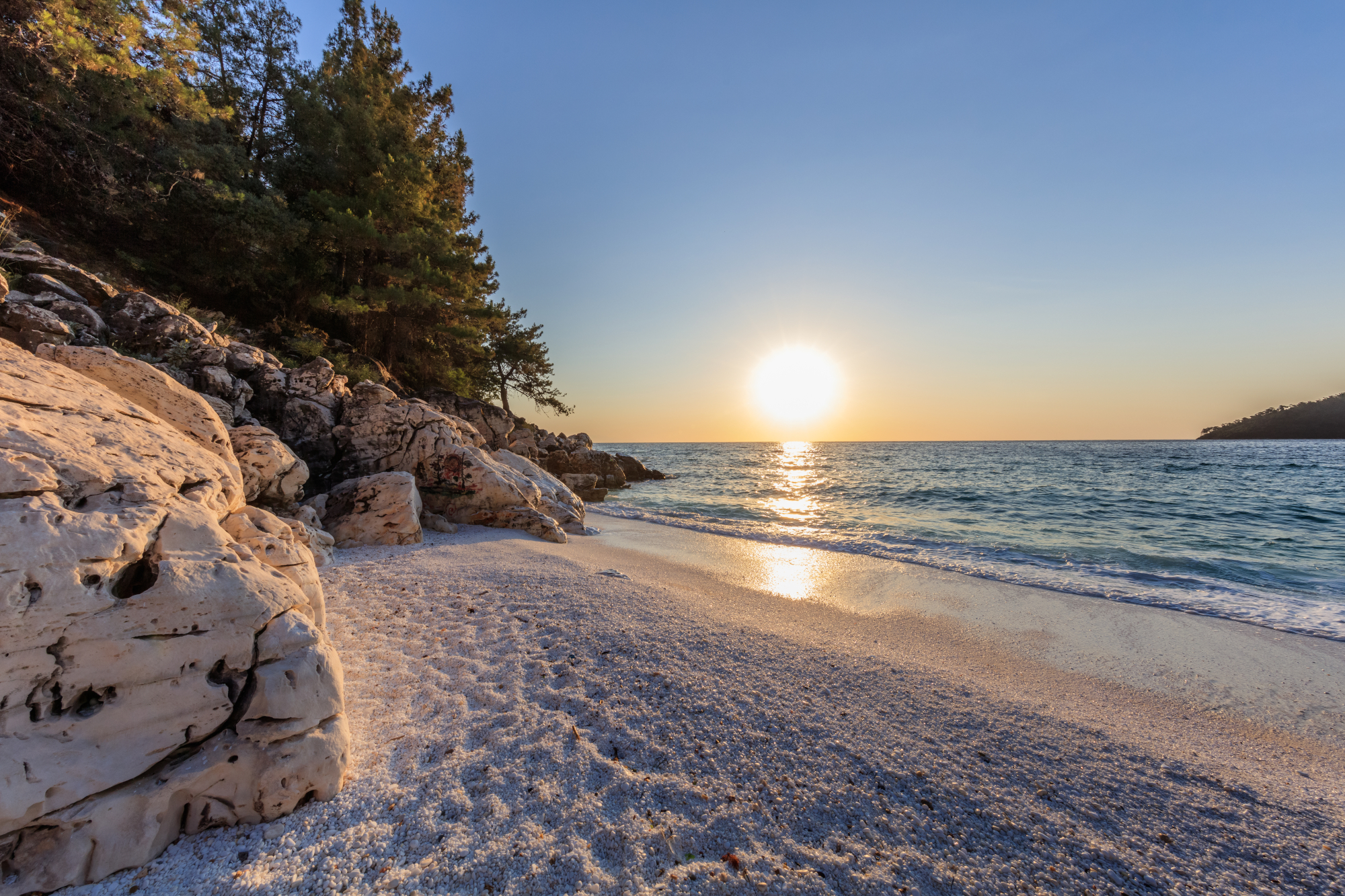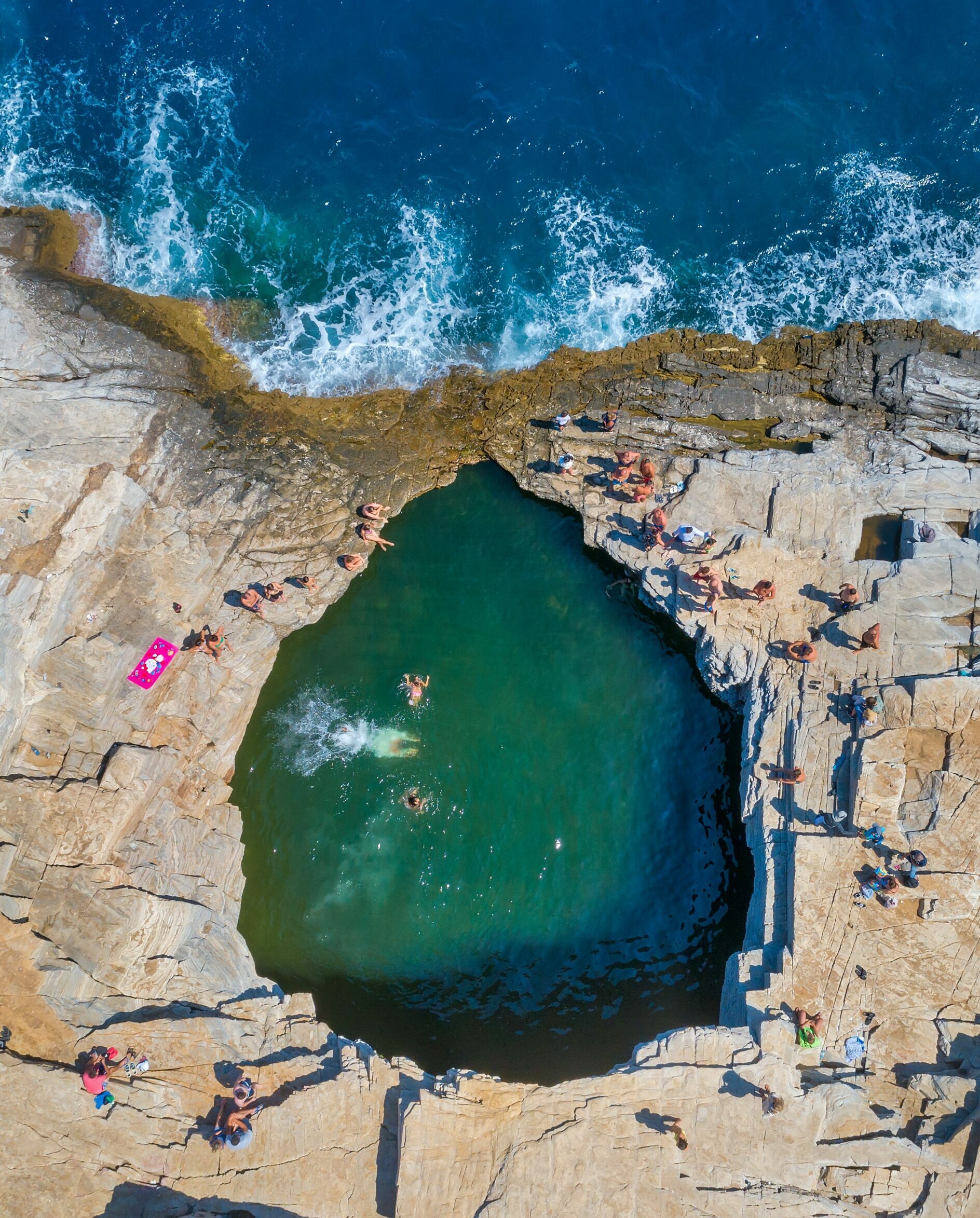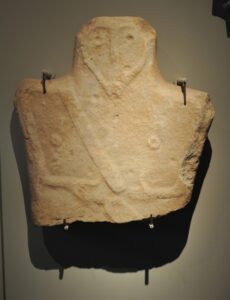Tucked into the far-north elbow of the Aegean, Thasos – nicknamed the “Emerald Isle” for its pine-green slopes – offers a mood worlds apart from the sun-bleached dazzle of the Cyclades. A swift ferry ride from Kavala or Keramoti deposits you on an island where marble ruins lie half-submerged in gin-clear coves and goat bells carry farther than car horns.
Long adored by Northern Greeks and road-tripping Balkan neighbors yet still pleasantly low-profile abroad, Thasos layers eras and experiences with casual ease. Bronze-Age gold mines and a Hellenistic theater crown the capital, Limenas; Ottoman stone mansions and walnut-shaded squares await in mountain hamlets like Theologos and Kazaviti. Around the coast a necklace of family-friendly beaches – Golden Beach, Pefkari, Psili Ammos – alternate with hidden pine-framed inlets you can claim for an afternoon swim.
Nature remains the island’s quiet trump card: hiking trails climb to 1,200-meter Mount Ypsarion, jeeps skirt waterfalls and natural rock pools, and every turn offers a picnic spot perfumed by wild thyme. Add a culinary scene that punches well above its weight – think honey tinged with pine resin, briny Throumba olives pressed into velvety oil, and tavernas grilling red mullet over vine clippings – and you have a destination that feels both richly cultured and effortlessly accessible.
Use the following mini-guide to chart your own course through Thasos’s ruins, ridgelines, and seaside tables – before the rest of the world catches on.
Why Thasos?
Because it offers something more grounded, more authentic. Thasos is a place where the Aegean feels intimate and wild, where ancient marble meets pine-scented paths, and where you can have a quiet beach to yourself – even in August.
For families, solo travelers, history buffs, and nature lovers alike, Thasos offers a slower, more soulful Greek island experience.
Thasos in a Snapshot
With a legacy dating back to the 7th century BC, Thasos was once a powerful city-state known for its gold mines, vineyards, and fine marble. Today, the island remains culturally rich, but it’s the extraordinary natural beauty that makes it unforgettable. Dotted with pine forests, olive groves, and dozens of pristine beaches – many framed by turquoise waters and soft, golden sand – Thasos offers a quieter, greener Greek island experience, ideal for those who like their holidays to include a bit of adventure, history, and culinary discovery.
Beaches: Where to Swim
Thasos is famous for its many beaches, especially those perfect for families. One standout is Paradise Beach, just 2 kilometers from the village of Kinira on the island’s eastern side. True to its name, Paradise boasts fine, pale sand and a bay of shallow, aquamarine water that glows in ever-shifting hues throughout the day. Towering pine trees stretch almost to the shore, giving the area a tropical feel and natural shade – ideal for barefoot strolls and lazy afternoons.
Well-organized but never overcrowded, Paradise Beach has beach bars, sunbed rentals, space for your own umbrella, and even a beach volleyball court. Though originally popular with naturists (and still discreetly frequented by some at its rocky edge), today it’s a magnet for families, sun-seekers, and water-sports enthusiasts alike. If windsurfing is your thing, the occasional strong breeze makes for excellent conditions.
Nearby Kinira village offers a solid post-swim lunch scene with casual tavernas serving fresh seafood and traditional dishes. You’ll find classics cooked in wood-fired ovens at Faros, creative plates like seafood souvlaki at Agorastos, and laid-back spots like Sta Kala Kathoumena offering well-executed local fare alongside unbeatable sea views.
Another iconic swimming spot is Giola – a natural rock pool carved into the rugged southern coast of the island. Shaped by millennia of crashing waves, this crystalline basin, nicknamed “Aphrodite’s Tear,” is about 20 meters long, with water that glows a surreal emerald. Reaching Giola requires a bit of a hike, but the reward is one of the most photogenic places in the Aegean. It’s best visited early in the day or outside peak season, as the flat surrounding rocks fill up fast.
Villages, Walks, and Culture
While Thasos has no shortage of seaside charm, its interior is equally captivating. Head uphill to discover villages like Panagia, a traditional settlement perched at 300 meters on the slopes of Mount Ypsarion. Stone fountains, shady plane trees, and preserved white houses with wooden balconies make this a lovely spot to explore on foot. Close by, Potamia is a green, cool village that serves as the gateway to a challenging yet rewarding hiking trail up to Ypsarion’s summit – the island’s highest peak at 1,206 meters.
Further inland, Maries is known for its fresh air, nearby artificial lake, and tranquil atmosphere, while Theologos impresses with its preserved mountain architecture and excellent tavernas specializing in grilled meats.
If hiking is your thing, Thasos is a dream. The island’s extensive network of footpaths and forest roads crisscross dense pine woods, olive groves, chapels, springs, and remote beaches. Trails vary from easy coastal walks to more ambitious climbs, making it ideal for everyone from casual strollers to serious trekkers. While trail signage can be hit-or-miss, even getting a bit lost often leads to delightful discoveries – just pack water and a bit of curiosity.
Sights: A Journey Through Time
Thasos was once a thriving ancient hub, and traces of its classical past are everywhere. Start at the Archaeological Museum of Thasos (the island’s capital and main port), home to over 1,700 artifacts from the 7th century BC to the 7th century AD. Don’t miss the monumental 3.5-meter kouros (male statue) or the fascinating inscriptions on early wine laws, considered some of the oldest known.
Nearby, the Ancient Theater of Thasos offers not only historical intrigue but also panoramic views over the town and sea. In summer, it comes alive with concerts and performances. Other significant sites include the ruins of the Ancient Agora, the temples and sanctuary at Alyki (also known for its marble quarries), and the Archangel Michael Monastery, dramatically perched on a southern cliffside.
Culinary Roots & Local Tastes
Thasos is synonymous with olives – and not just any olive. The island’s signature product is the Throuba Thassou, a wrinkled black olive with Protected Designation of Origin (PDO) status, known for its intense flavor and naturally low bitterness. To dive deeper into this culinary heritage, visit the Thasos Olive and Olive Oil Museum, where you can explore traditional tools, watch documentaries on olive oil production, and even wander among dozens of different olive tree varieties planted in the garden.
Thasos is also known for its fragrant pine honey, artisanal cheeses, sun-dried figs, and rustic wines. Many family-run tavernas take pride in sourcing ingredients locally – think grilled fish caught that morning, salads with just-picked greens, and fresh goat cheese from nearby farms.
Getting There & Around
Thasos is one of the most accessible islands in the northern Aegean. The easiest way to reach it is via ferry from the Keramoti Port near Kavala. The crossing takes just 35 minutes and lands you in Limenas, the island’s capital. If you’re flying in, Kavala Airport is only a 15-minute drive from Keramoti.
Once on the island, a car or scooter rental is highly recommended to fully explore its coastal roads, hidden beaches, and mountain villages. The ring road that circles the island is in excellent condition and offers spectacular sea views with frequent detours to coves, forests, and archeological sites.



